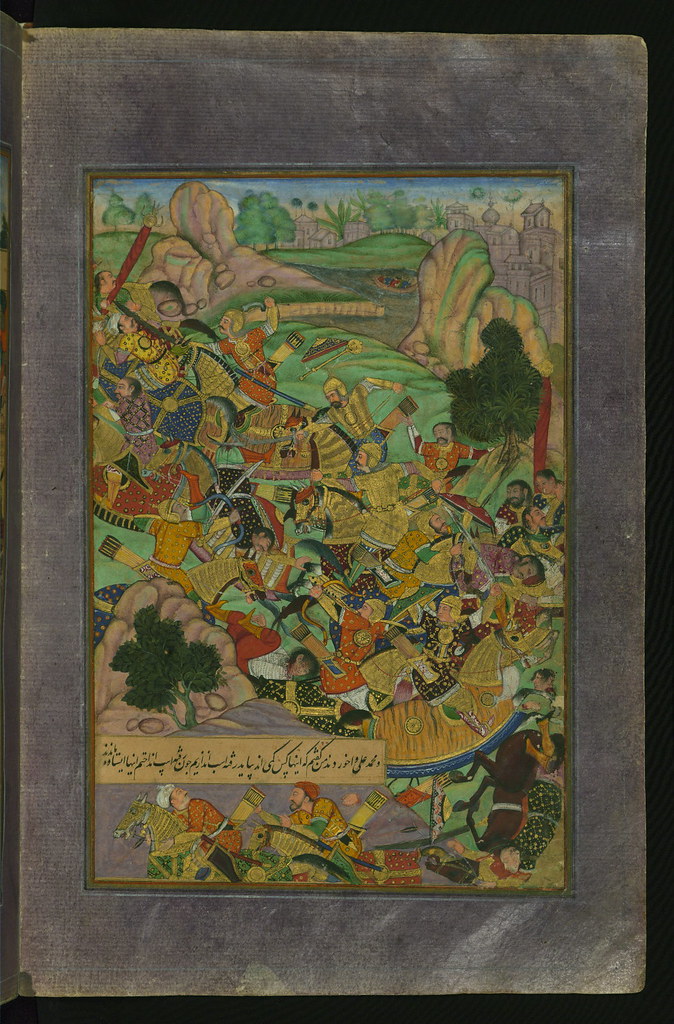|
Illustrations from the Walters manuscript W.596
copy of the Baburnamah.
Recognized as one of the world's great autobiographical memoirs, the Baburnamah is the story of Zahir al-Din Muhammad Babur (866 AH/AD 1483-937 AH/AD 1530), who conquered northern India and established the Mughal Empire (or Timurid-Mughal empire).
Born in Fergana (Central Asia), Babur was a patrilineal Timurid and matrilineal Chingizid.
Babur wrote his memoir in Chaghatay Turkish, which he referred to as Turkic, and it was later translated into Persian and repeatedly copied and illustrated under his Mughal successors.
The present copy in Persian, written in Nasta'liq script, is a fragment of a dispersed manuscript that was executed in the late 10th century AH/AD 16th.
The ordering of the folios as found here does not follow the narrative of the text.
The Walters' fragment contains 30 mostly full-page paintings that are representative of the Mughal court style under the Mughal Emperor Akbar (reigned 963 AH/AD 1556-1014 AH/AD 1605).
Another major fragment of this work containing 57 folios is in the State Museum of Eastern Cultures, Moscow.
Babur confronting enemies in the mountains of Kharabuk and Pashamun
Click for a larger image.

Walters Art Museum manuscript W.596, fol.5b
This scene from Walters manuscript W.596 depicts the Mughal emperor Babur with his brave companions, confronting their enemies in the mountains of Kharabuk and Pashamun. The text refers to Babur and his few men deciding to charge the enemy, who stand immobile.
Previous Next
Mughal Illustrations of Costume & Soldiers in the Baburnama
|